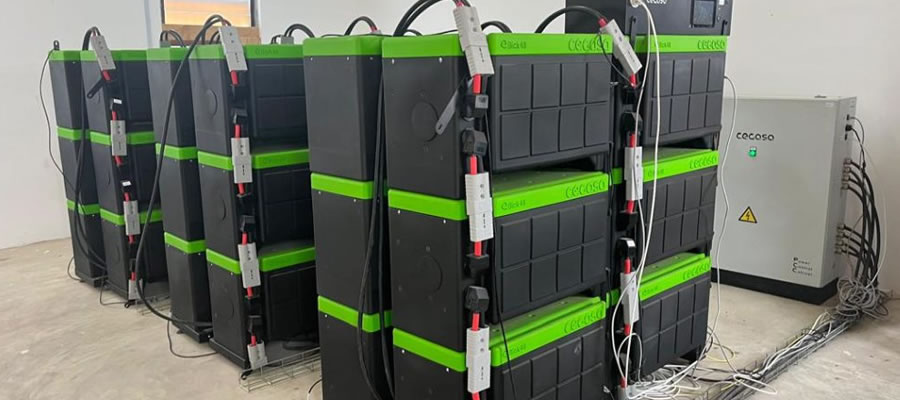

Location & Size
The Ada East District is situated in the Eastern part of the Greater Accra Region. It can be located between latitudes 5°45’S and 6°00’N and Longitude 0°20’W and 0°35’E. The total land area of the District is about 289.78 square km, which represents almost 8.93% of the total land size of the Greater Accra Region.
The District shares common boundaries with the Central Tongu District to the North, South Tongu District and Ada West District to the East and West respectively. It is bounded to the south by the Gulf of Guinea, which stretches over 19 kilometres (27.9 miles) from Kewunor to Totope. It is also bounded by the Volta River South–Eastwards extending to the Gulf of Guinea southwards thereby forming an Estuary, about 2 kilometres away from the District capital, Ada-Foah.
Topology & Drainage
Topography
The District forms the central portions of the Accra plains. The relief is generally gently and undulating, a low plain with heights not exceeding 60 meters (200 ft) above sea level. The prominent relief features include the Tojeh boulders rising about 240 meters (800 ft) above sea level. These boulders are scattered irregularly over the sea. The photograph below portrays a devastated road from Ada-Foah-Otrokpe by tidal waves.
Heavy and strong tidal waves of the sea have eroded the sandy coastline leading to occasional flooding of some communities Kewunor, Lolonyakope, Pute, Otrokpe, Anyakpor, Elavanyo and Totope. The low lying nature of these coastlines otherwise known as “coastline of submergence” has aggravated the problem. Following this untimely disaster that has bedevilled past and present communities, the Sea Defence initiative has been launched and main works had begun ahead of construction.
Drainage
The general drainage pattern of the Ada East District can be described as dendritic with some of the streams taking their sources from the Volta River. Water bodies such as Futue and Tamatoku among others are sprung ups with increased and decreased capacities in the wet and dry seasons respectively.
The major river in the District is the Volta, which meanders slowly into the sea at Azizanya. A feature highly conspicuous at this stage of the river is the great Estuary, which attracts thousands of tourists yearly. The district is therefore making strenuous efforts to develop innovative techniques to harness this great potential. Below is the Futue River, a main tributary of the Volta River.
Climate & Vegetation
Vegetation
The vegetation is basically the coastal savannah type, characterised by short savannah grasses and interspersed with shrubs and short tress. Along the coast, there are stretches of coconut trees and patches of coconut groves which combine to give the area a classic look.
This type of vegetation is also common along the fringes of some of the islands on the Volta River. The mangrove trees grow to heights of 15m averagely and are densely vegetated and green in appearance throughout the year. However, human activities such as burning of charcoal, indiscriminate cutting down of trees for fish processing (smoking) are working together to destroy this beautifully formed vegetation. Figure 3 below portrays the White Mangrove along the Futue River, a few meters from the District Capital- Ada-Foah.
Climatic Conditions
The Ada East District is encapsulated by the south-eastern coastal plains of Ghana which is one of the hottest parts of the country. Temperatures are high throughout the year and ranges between 23°C and 28°C. A maximum temperature of 33°Cis normally attainable during the very hot seasons. Rainfall is generally heavy during the major seasons between March and September. The average rainfall is about 750 millimetres. The area is however very dry during the harmattan season when there is no rainfall at all. Humidity is about 60 per cent high, due to the proximity of the sea, the Volta River and other water bodies. Daily evaporation rates range from 5.4 - 6.8 millimetres. The relatively high temperatures help in the quick crystallization of salt for the salt industry.
Geology & Soil
Minerals and Geology
The Ada East District is well endowed with a large deposit of salt as a great economic potential. Salt mining was and continues to form the greatest employment for a large number of the population particularly in areas where the resource exists. The District for some time past has gained its revenue from the commodity and continues to depend on it for Internally Generated Revenue.The recent split of the district have negatively affected the mining of salt. However, the frantic efforts are been made to develop the areas with the potential of producing salt.
The Dahomeyan rocks consist predominantly of gneisses, schist and migmatities. These rocks weather into dark grey calcareous clay and silt which are only slightly permeable.The rocks provide an immense economic benefits and employment opportunities to a portion of the population in the District. Large scale sand and gravel wining occurs in Amlakpo, Tojeh and along the coast for the construction industries. Quiet recently, however, the Department of Wildlife has made critical efforts to stop sand winning along the coast. This became imperative following the breakdown in the coastal line and its associated effects of floods.
Date Created : 11/28/2017 4:19:45 AM












 facebook
facebook
 twitter
twitter
 Youtube
Youtube
 +233 593 831 280
+233 593 831 280 0800 430 430
0800 430 430 GPS: GE-231-4383
GPS: GE-231-4383 info@ghanadistricts.com
info@ghanadistricts.com Box GP1044, Accra, Ghana
Box GP1044, Accra, Ghana